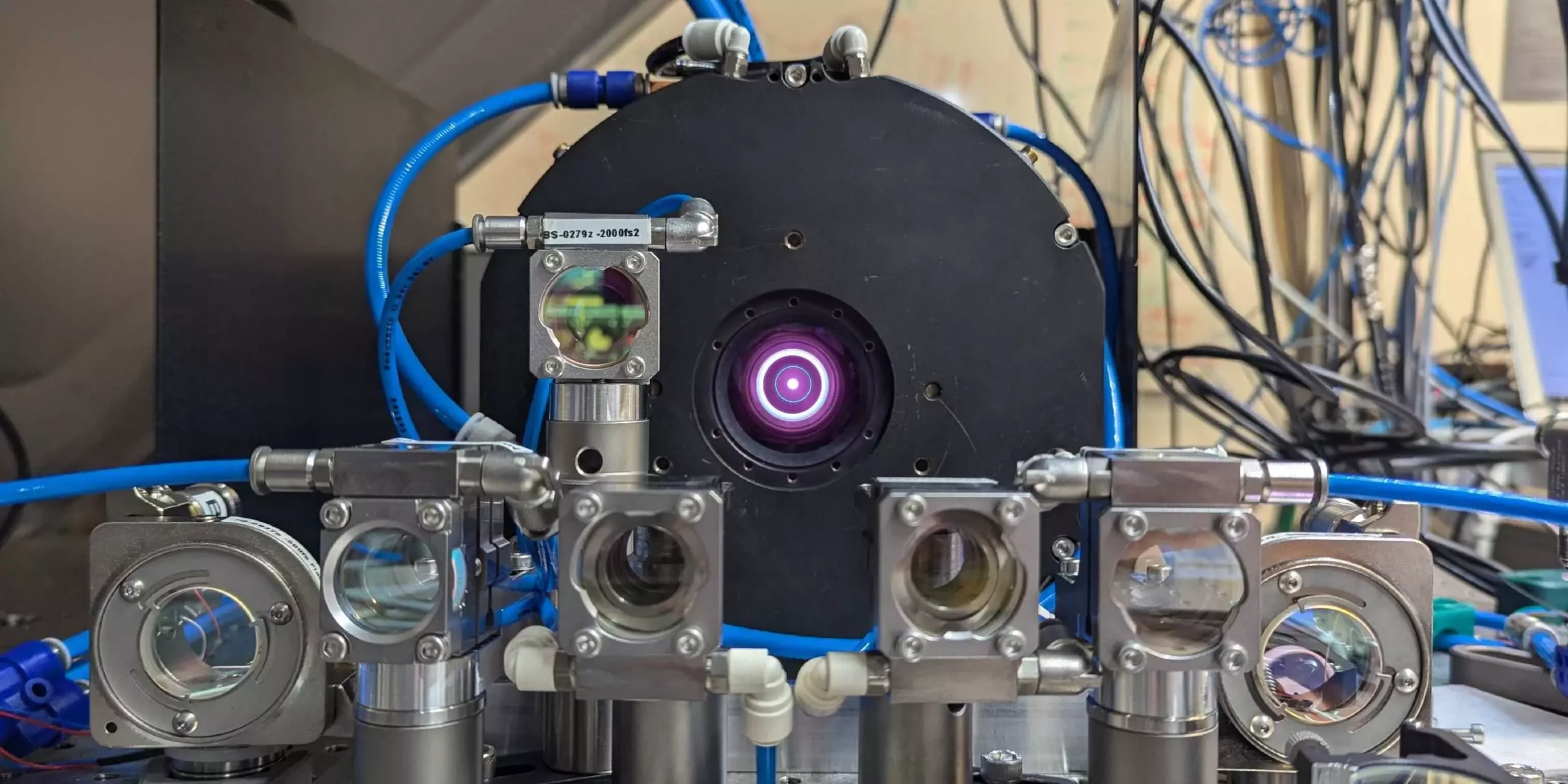When one thinks of lasers, the common image that arises is that of a steady, coherent beam of light. This conceptualization, while accurate, only scratches the surface of laser technology. In numerous scientific and industrial settings, there is a burgeoning need for lasers that deliver exceptionally short, high-intensity light pulses. These brief flashes of laser light are vital for a variety of applications, ranging from precision machining of materials to the advancement of high harmonics, potentially even reaching X-ray generation. Such capabilities allow researchers to observe ultra-fast phenomena that unfold within attoseconds—a timescale that is incredibly challenging to grasp or manipulate.
An exciting development in this domain has emerged from a team at ETH Zurich, led by Ursula Keller, a distinguished professor at the Institute for Quantum Electronics. Keller and her team have recently shattered records in laser pulse generation, achieving an average power output of 550 watts. This marks an increase of over 50% compared to previous benchmarks, leading them to create what are now known as the strongest pulses ever emitted by a laser oscillator. The implications of this achievement permeate many fields, offering innovative pathways for research and industrial enhancement.
The extraordinary pulses produced by Keller’s team last less than a picosecond and are emitted at an astonishing rate of five million pulses per second. When the peak power of these laser emissions is realized, it can reach an impressive 100 megawatts—a quantity capable of temporarily powering 100,000 vacuum cleaners. The technological feat is a testament to 25 years of Keller’s research focused on short pulsed disk lasers. These lasers utilize a uniquely thin disk, merely 100 micrometers thick, containing ytterbium atoms, paving the way for groundbreaking advancements.
However, the journey towards attaining such heights was far from straightforward. Keller’s research group faced numerous challenges, often encountering complications that led to catastrophic failures of internal components. Yet, each setback contributed to greater comprehension and reliability of short pulsed lasers, frequently employed in various industrial applications. Moritz Seidel, a doctoral researcher within Keller’s lab, highlights that the latest attainment arose from two key innovations, which collectively facilitated the unprecedented boost in both power and consistency of pulse output.
The first innovative solution involved a clever arrangement of mirrors that enables the light to traverse the thin disk repetitively before being allowed to exit through an outcoupling mirror. This configuration not only amplifies the light remarkably but does so without compromising stability—an essential feature necessary for maintaining high performance in laser operations.
The second major breakthrough concerns a special type of mirror known as the Semiconductor Saturable Absorber Mirror (SESAM), a concept Keller pioneered three decades ago. Unlike traditional mirrors, SESAM’s reflectivity varies based on light intensity, making it uniquely suited for generating rapid pulses. It ensures that the laser emits brief bursts of highly concentrated light by reflecting the enhanced light that has traversed the amplifying disk multiple times.
In previous methodologies, achieving similar power outputs required the use of weaker laser pulses processed through multiple separate amplifiers external to the laser, introducing noise and instability detrimental to precision applications. Keller’s direct amplification within the laser oscillator represents a significant leap in technology.
Time-consuming technical hurdles beset the development of a sapphire window attachment to the SESAM mirror, a feat that would ultimately enhance the mirror’s functionality. The triumph in this innovative journey was not just a professional victory; it was a moment filled with excitement and personal pride as researchers watched their laser emit perfect pulses for the first time.
Keller anticipates the potential for even shorter pulses, an adaptation that is crucial for producing attosecond bursts. This rapid-fire laser technology may find utility in frequency combs within the ultraviolet to X-ray spectrum, paving the way for the development of more precise timekeeping devices. Keller’s visionary ambition extends to questioning the very nature of fundamental constants, positing they may not be as immutable as previously thought.
Moreover, the laser’s capability to generate terahertz radiation, which possesses a longer wavelength than visible light, could significantly enhance material testing methodologies. With each advancement, it becomes increasingly evident that Keller’s pulse lasers offer a promising alternative to traditional amplifier-based systems, heralding a new era of accuracy and efficiency in measurement and application.
The advancements achieved at ETH Zurich represent a remarkable milestone in laser technology, illustrating both the power and versatility of modern laser systems while inspiring future exploration in the field.


Leave a Reply